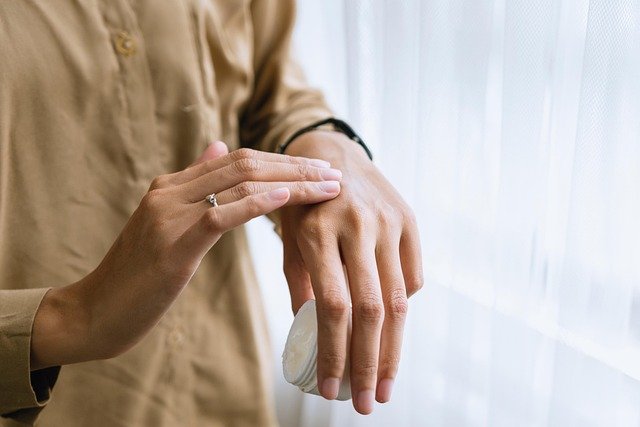Lymphatic Fitness: The Next Frontier in Holistic Wellness
The human body's lymphatic system, often overlooked in traditional fitness regimens, is emerging as a crucial focus in the quest for optimal health and beauty. This intricate network of vessels and nodes, responsible for filtering toxins and maintaining fluid balance, has long been relegated to the sidelines of wellness discussions. However, a growing body of research and a surge of interest from health enthusiasts are bringing lymphatic fitness to the forefront of holistic wellness practices. As we delve into this fascinating aspect of human physiology, we'll explore how targeted exercises and lifestyle changes can enhance lymphatic function, potentially revolutionizing our approach to beauty, fitness, and overall well-being.

The Science Behind Lymphatic Fitness
Recent scientific studies have shed light on the profound impact of lymphatic health on various aspects of wellness. Research published in the Journal of Lymphology suggests that targeted lymphatic exercises can significantly improve lymph flow and reduce inflammation throughout the body. These findings have implications for everything from skin health to immune function. Moreover, a study in the International Journal of Molecular Sciences has linked impaired lymphatic function to a range of health issues, including chronic fatigue, autoimmune disorders, and even certain types of cancer. By focusing on lymphatic fitness, individuals may be able to mitigate these risks and enhance their overall health profile.
Lymphatic Exercises: A New Frontier in Fitness
The concept of lymphatic fitness introduces a novel approach to exercise, focusing on movements that specifically target the lymphatic system. These exercises often involve rhythmic, low-impact movements that encourage lymph flow throughout the body. One popular technique is rebounding, which involves gentle bouncing on a mini-trampoline. This activity creates a pump-like action that stimulates lymph circulation. Another effective method is lymphatic self-massage, which involves gentle, sweeping motions along lymphatic pathways to encourage fluid movement. Yoga and Pilates, with their emphasis on breath work and gentle stretching, also contribute to lymphatic health by promoting overall circulation and reducing stagnation in the body’s tissues.
Beauty Benefits of Lymphatic Fitness
The beauty industry is taking note of the potential benefits of lymphatic fitness. Improved lymphatic function can lead to reduced puffiness, enhanced skin clarity, and a more radiant complexion. Lymphatic drainage techniques, once reserved for specialized spa treatments, are now being incorporated into daily skincare routines. Beauty tools such as jade rollers and gua sha stones, when used correctly, can help stimulate lymphatic flow in the face and neck, potentially reducing the appearance of fine lines and promoting a more youthful appearance. Additionally, the reduction in inflammation associated with improved lymphatic function may contribute to healthier hair and stronger nails, further enhancing overall beauty outcomes.
Lifestyle Factors Supporting Lymphatic Health
While targeted exercises play a crucial role in lymphatic fitness, lifestyle factors also significantly impact the system’s function. Hydration is paramount, as adequate fluid intake helps maintain optimal lymph flow. A diet rich in antioxidants and low in processed foods can reduce inflammation and support overall lymphatic health. Certain herbs and spices, such as ginger, turmeric, and cayenne pepper, are believed to have lymph-stimulating properties. Dry brushing, a practice that involves gently brushing the skin with a natural-bristle brush before showering, is another technique gaining popularity for its potential to stimulate lymphatic flow and exfoliate the skin simultaneously.
Integrating Lymphatic Fitness into Daily Life
Incorporating lymphatic fitness into one’s daily routine need not be overwhelming. Simple practices like taking regular breaks to stretch and move during sedentary periods can make a significant difference. Alternating between hot and cold showers, a technique known as contrast hydrotherapy, can also stimulate lymphatic circulation. For those seeking a more structured approach, lymphatic yoga classes and specialized fitness programs are becoming increasingly available. These classes often combine gentle exercises, breathing techniques, and self-massage to create a comprehensive lymphatic workout. As awareness of lymphatic fitness grows, we can expect to see more innovative products and services designed to support this aspect of health and wellness.
In conclusion, lymphatic fitness represents an exciting frontier in the world of beauty and wellness. By focusing on this often-overlooked system, individuals have the opportunity to enhance their overall health, improve their appearance, and potentially prevent a range of chronic health issues. As research in this field continues to evolve, we can anticipate further innovations in lymphatic-focused fitness regimens, beauty treatments, and lifestyle recommendations. Embracing lymphatic fitness may well be the key to unlocking a new level of holistic well-being, offering a fresh perspective on how we approach health and beauty in the modern world.





